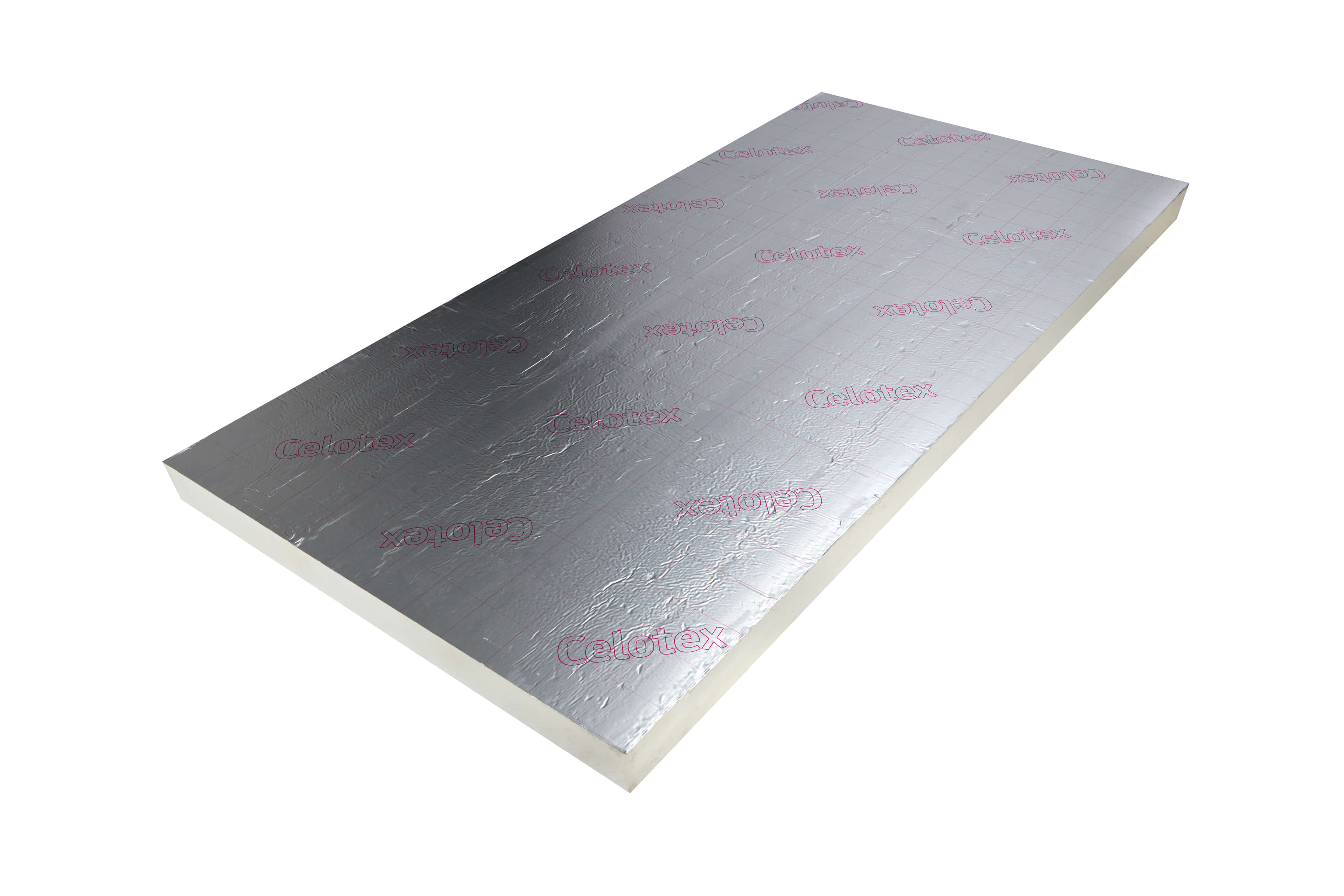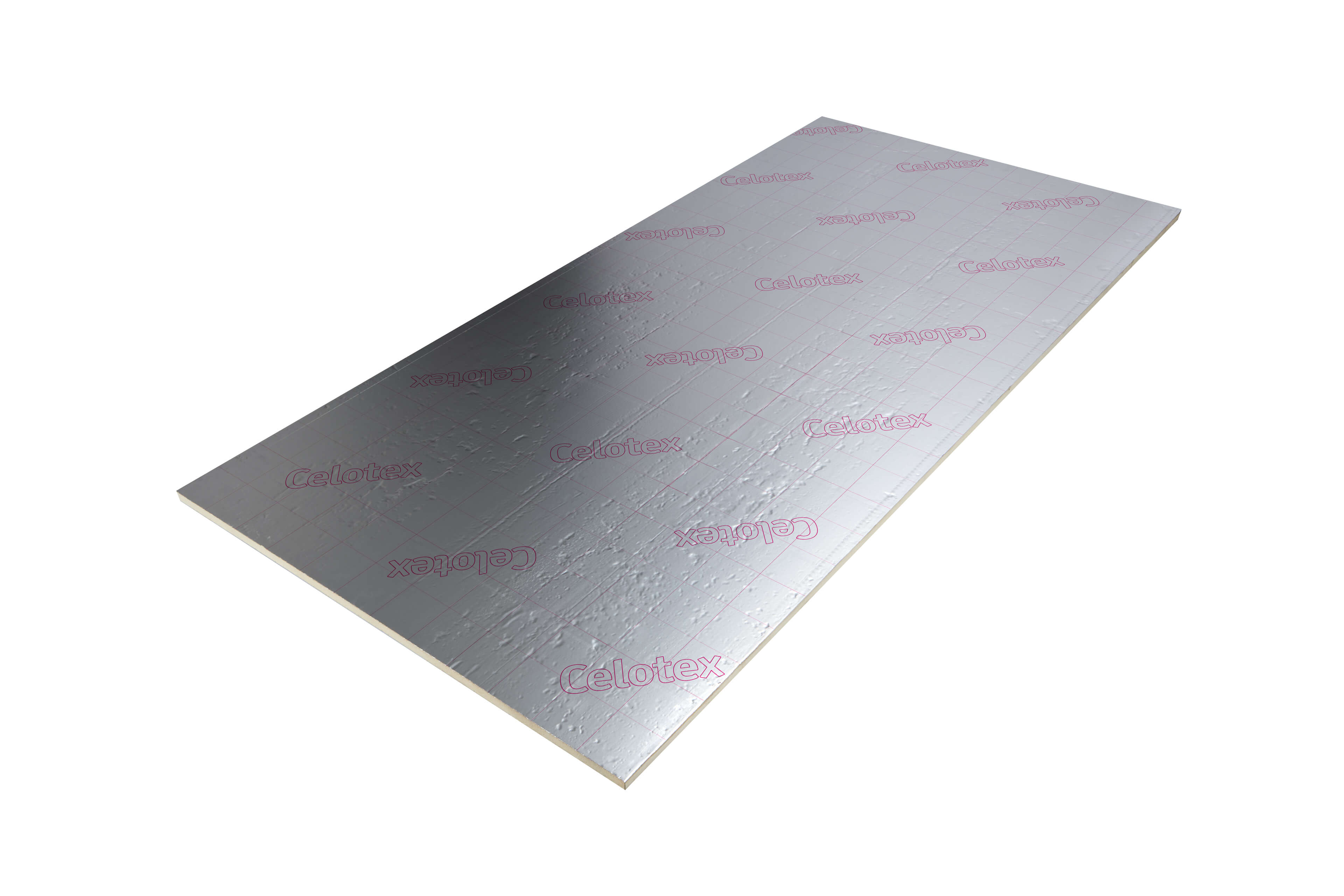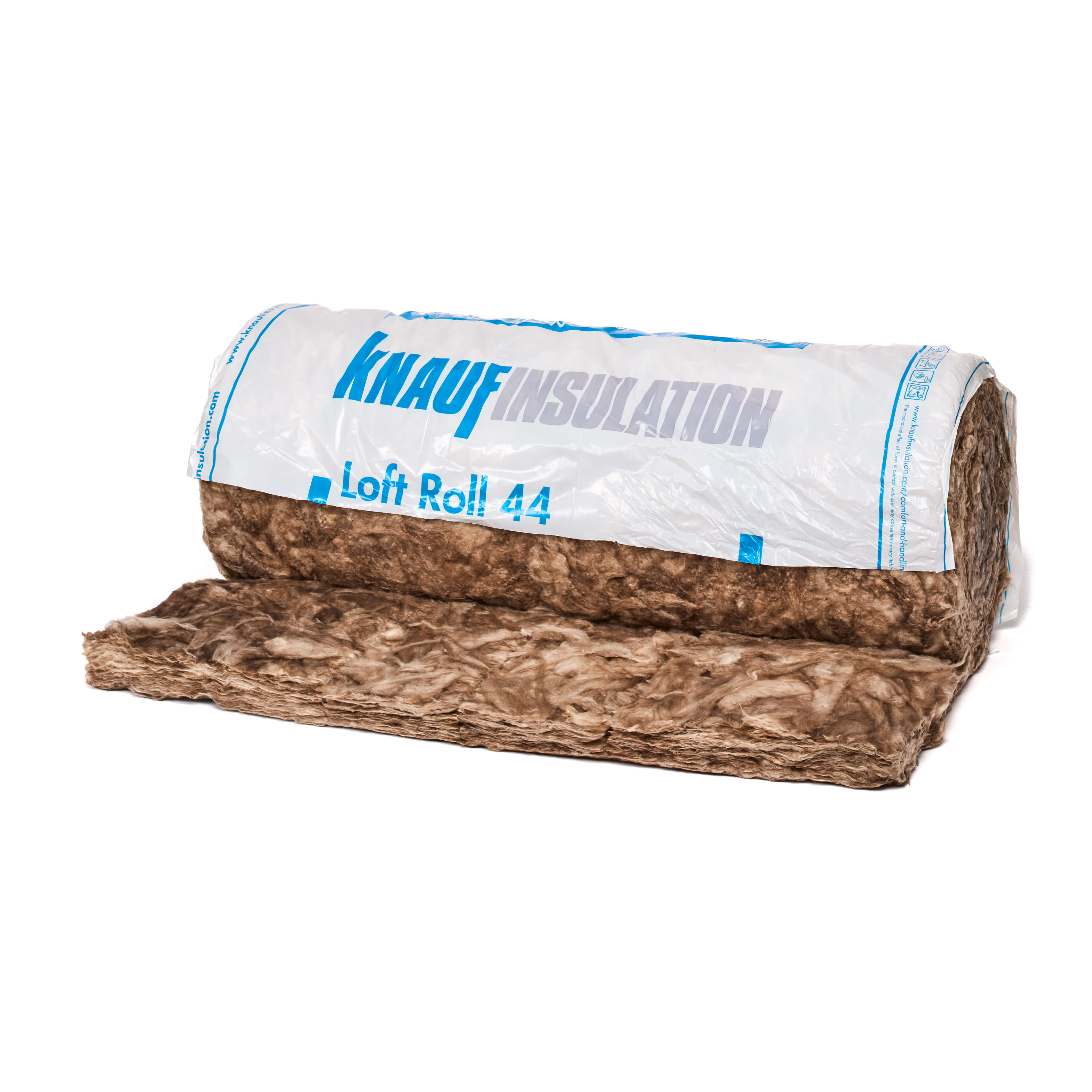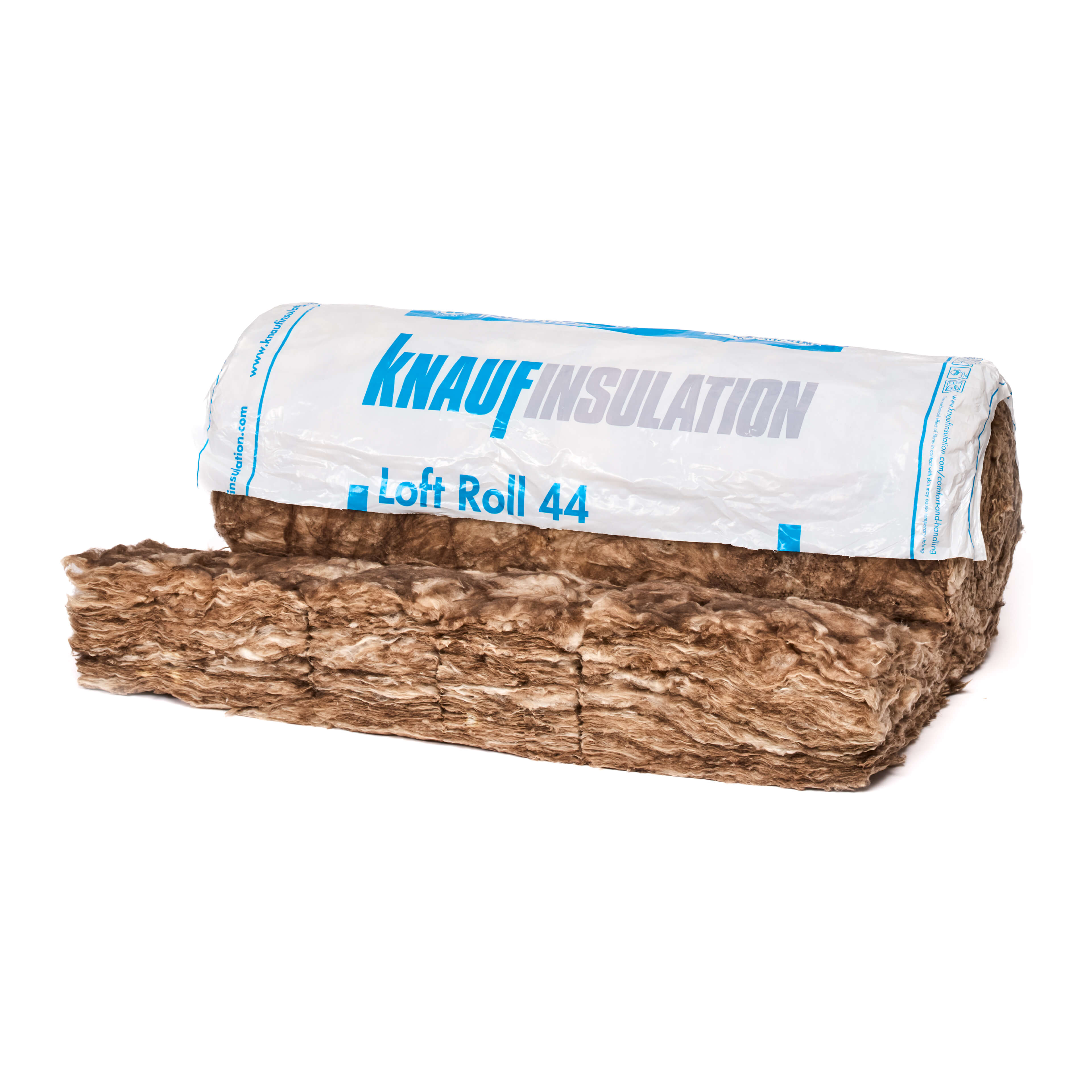Loft Insulation
(27 Products)Loft insulation is one of the simplest ways to take control of your home’s comfort, energy use, and running costs. Installed in the roof space, it forms a protective layer that slows down the transfer of heat, helping to maintain a steady indoor temperature no matter the season. Whether it’s laid between and over the joists in the loft floor or fitted between the rafters, it remains one of the simplest and most effective ways to improve a property’s thermal performance.
What Is Loft Insulation?
Loft insulation is a protective layer of material, usually thick rolls of mineral wool or glass wool, that is fitted throughout the roof space of a property.
Heat naturally rises, and without insulation in the loft, a significant amount of it escapes through the roof. This can account for up to 25% of a home’s total heat loss, making the loft one of the most common areas for energy waste in a property.
Loft insulation tackles the problem head-on by forming a layer of resistance against heat movement - keeping warmth inside during winter, and blocking excessive solar heat from entering during summer.
Depending on how the loft is used, the insulation can be laid between and across the joists (known as a cold loft) or installed between the rafters (a warm loft, ideal for habitable spaces).
Cold lofts are suitable for general storage and standard domestic use, while warm lofts are typically used for loft conversions, home offices, or additional bedrooms where you need to maintain a comfortable temperature all year round.
The benefits are immediate and long-lasting. In winter, you’ll notice rooms stay warmer for longer without constantly reaching for the thermostat. Your boiler or heating system won’t have to work as hard, which means lower energy usage and reduced bills.
Come summer, the insulation works in reverse - slowing the heat from the sun that would otherwise accumulate in the roof space and radiate downwards. This makes top-floor rooms more liveable, day and night.
Benefits
- Energy & Cost Savings: An uninsulated home can lose up to a quarter of its heat through the roof. By installing the recommended depth of loft insulation, you can dramatically reduce this heat loss and save hundreds of pounds on your heating bills every year.
- Improved Year-Round Comfort: A well-insulated loft helps to maintain a more stable and comfortable temperature throughout your home. It keeps the warmth in during winter and prevents excessive heat from entering during summer, creating a more pleasant living environment.
- Positive Environmental Impact: Loft insulation lowers the amount of energy a home uses - particularly gas or electricity used for heating. Since energy generation (especially gas heating and electricity from non-renewable sources) releases carbon dioxide, using less energy means fewer emissions.
- Increased Property Value: A home with high levels of insulation is more energy-efficient, resulting in a better Energy Performance Certificate (EPC) rating. This is an attractive feature for potential buyers and can increase the market value of your property.
Loft Insulation Methods: Cold vs. Warm Lofts
The right way to insulate your loft depends on how you intend to use the space. There are two primary methods:
- Cold Loft Insulation (Insulating the Joists): This is the most common and cost-effective method. Insulation is laid across the floor of the loft, between and over the joists. This method keeps the heat in the living spaces below, meaning the loft space itself remains cold (hence the name). This is the ideal approach if your loft is only used for storage. This method typically uses flexible insulation rolls.
- Warm Loft Insulation (Insulating the Rafters): If you plan to use your loft as a habitable room (such as a bedroom, office, or playroom), you need to create a "warm loft." This involves insulating at the rafter level, along the slope of the roof itself. This method keeps the heat within the loft space, making it a comfortable part of your home. This is often achieved using high-performance rigid insulation boards. Insulating at the rafter level is a more complex job and is often best carried out by a professional.
Common Materials
- Insulation Rolls (Blanket Insulation): Insulation rolls are the most widely used type of loft insulation for "cold loft" applications. These large, flexible rolls that are easy to handle and fit between standard joist spacings.
- Material: Typically made from mineral wool (either glass fibre or rock wool) or natural materials like sheep's wool.
- Application: Ideal for rolling out between and over the joists on the loft floor to build up the required depth.
- Benefits: Highly cost-effective, excellent thermal performance, easy for competent DIYers to install, and also provides good acoustic insulation.
- Insulation Boards (Rigid Insulation): Insulation boards are robust, high-performance panels that offer exceptional insulation value for their thickness.
- Material: Often made from PIR (Polyisocyanurate) or other rigid foams like XPS or EPS.
- Application: The primary choice for "warm loft" installations, where they are cut to fit snugly between or are fixed over the roof rafters. They are also useful in cold lofts for creating insulated walkways or storage areas over the top of roll insulation (when supported by loft legs).
- Benefits: Excellent thermal performance in a slim profile, structurally strong, and moisture-resistant.
Loft Insulation Installation Considerations
Assessing Your Loft Space
- Initial Inspection: Before starting any insulation project, conduct a thorough assessment of the loft space. Check for existing insulation, gaps, damp issues, and structural integrity.
- Accessibility: Evaluate how easy it is to access the loft. This will affect the choice of materials and techniques used for insulation.
Considerations for Inaccessible Loft Spaces
- Dealing with Difficult Access: In cases where the loft space is hard to reach, consider using blown-in insulation or spray foam, which can be applied without needing extensive access.
- Minimising Disruption: Use techniques and materials that require minimal disturbance to the existing structure, particularly in tight or hard-to-reach areas.
Insulating Flat Roofs
- Specific Techniques: Flat roofs require different insulation approaches, such as rigid insulation boards above the roof deck or a combination of board and spray foam insulation.
- Moisture Management: Ensure there is adequate provision for moisture control, including vapour barriers and proper ventilation to prevent condensation.
Storage Space Considerations
- Preserving Usability: If you plan to use the loft as a storage area, consider installing a raised floor system over the insulation to support weight and maintain insulation effectiveness.
- Load-Bearing Capacity: Check the load-bearing capacity of the loft floor before adding heavy insulation materials or converting it into a storage space.
Frequently Asked Loft Insulation Questions
My Loft Has Old Insulation That’s Below The Joists. Should I Remove It Or Just Top It Up?
In most cases, you can simply top it up. If the existing insulation is dry, in good condition, and not made from hazardous materials, laying new insulation over the top is standard practice. The key is to ensure you reach the total recommended depth of 270mm.
However, if the old insulation is damp, heavily compressed, or shows signs of pest infestation, it must be safely removed and the underlying cause of the problem (like a leak or poor ventilation) must be fixed before new material is installed.
Is There Such A Thing As Too Much Loft Insulation?
Yes, you can have too much loft insulation, but the primary issue is not the insulation itself, but the consequences of improper installation.
The main problem with excessive or incorrectly fitted loft insulation is that it can block ventilation points, particularly at the eaves. This traps warm, moist air rising from your home, leading to condensation in the roof space. This can cause:
- Damp and mould growth
- Rotting of timber joists and roof structures
- Reduced effectiveness of the insulation if it becomes wet
In the UK, the recommended depth is 270mm. The key is to insulate to the recommended depth while ensuring a clear gap is left for ventilation.
Should I Install Loft Insulation Between Joists or Rafters?
If the loft is unused and unheated, insulate between and over joists to create a cold loft. If the loft is used as a living space, insulate between rafters to keep the area warm.
















